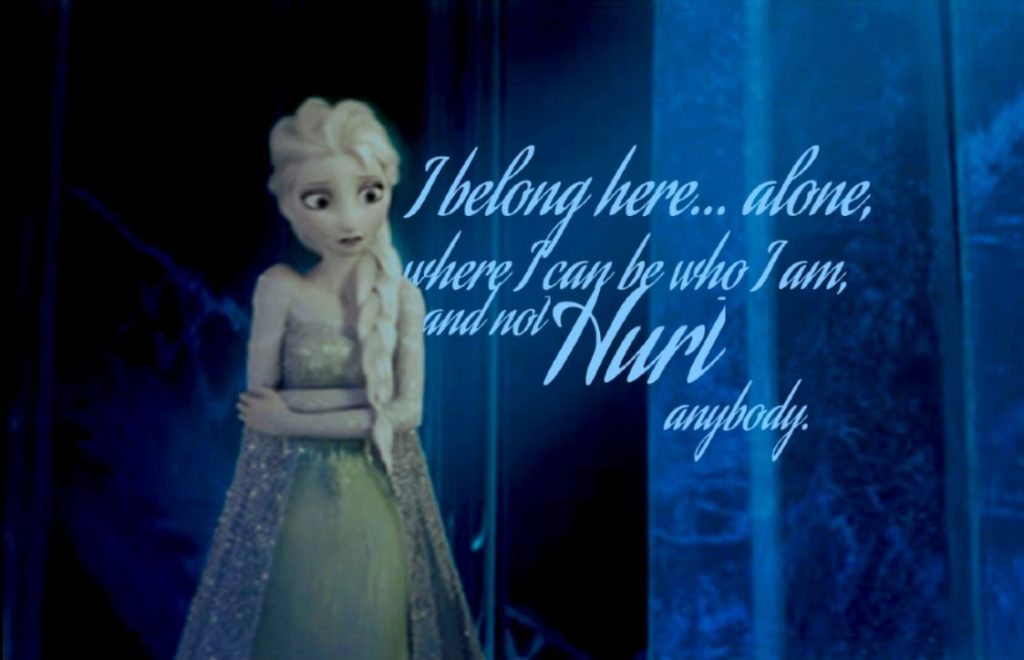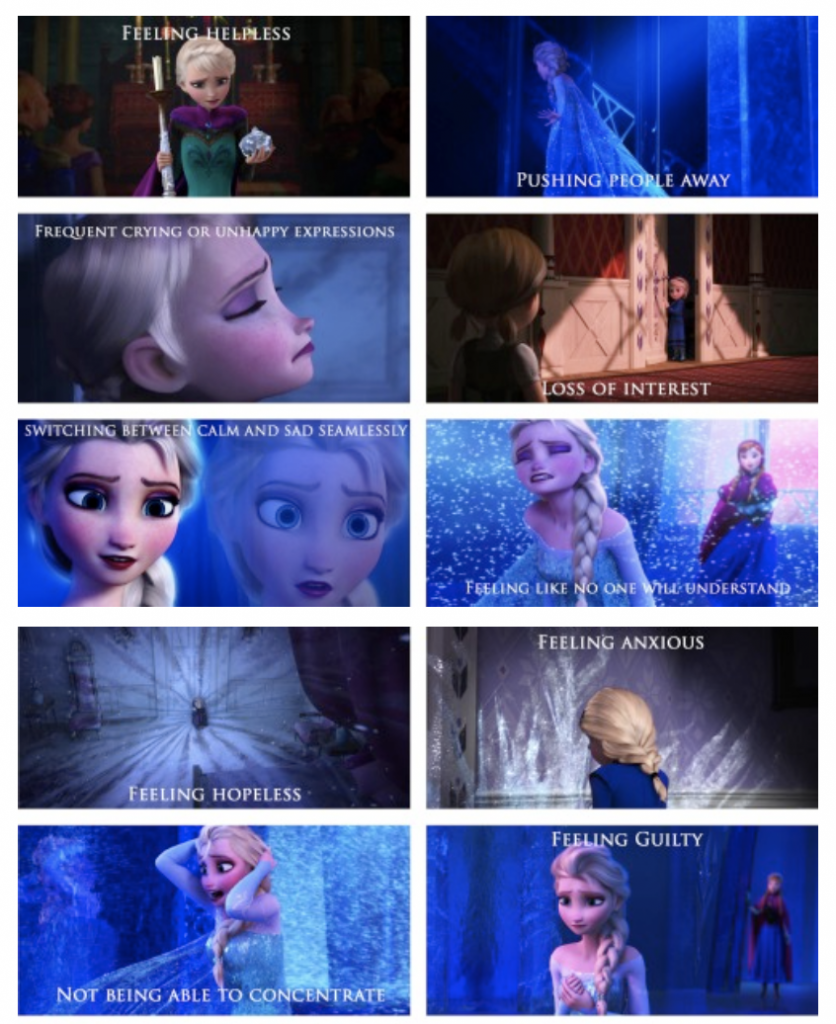Teaching English with film doesn’t have to be the only reason to bring movies into the classroom. We can learn a lot from movies. This is why focusing on the right kind of media is so important.
This blog will discuss the eight things Disney’s Frozen can teach us about mental health. We’ll also share our conversation prompts to help make it a meaningful discussion.
If you like the idea of using films to spark powerful conversations, don’t miss out on our Inside Out activities day.
In this Blog:
- What is the movie Frozen about?
- How does mental health play a role in the film Frozen?
- Discussing anxiety and identity with your teen?

What is the movie Frozen about?
Frozen is an animated musical, fantasy film from Disney, inspired by Hans Christian Andersen’s fairy tale “The Snow Queen”. Written by Jennifer Lee, the first female to write a full-length Disney film, Frozen explores the strength of the familial bond, identity, and mental wellbeing.
Elsa, voiced by Kirsten Bell, is a conflicted protagonist who discovered she has magical powers to manipulate ice and snow. While these powers allow her to provide beautiful and fun memories for her and her younger sister, Ana, it is also these same powers that almost end Ana’s life. Terrified of how she was almost responsible for the death of her sibling, Elsa pulls away from her family. It’s up to Ana to continue making the connection and try to bring Elsa out of her shell.
Not long after, Elsa becomes Queen of Arendelle when her parents get caught in a storm. The pressure causes her power to grow and she worries about doing more harm than good. Eventually, a stormy winter takes over the coastal town of Arendelle and it’s up to Ana to help bring Elsa back and save their home.
Ana, voiced by Idina Menzel, plays a fiery redhead who is determined to reconnect with her sister, find love, and save their home. She meets Kristoff, voiced by Jonathan Groff and a snowman named Olaf, voiced by Josh Gad.
How does mental health play a role in the film Frozen?
The protagonist, Elsa, is forced to hide a big part of who she is from the person she cares most about in the world. Following her sister’s near-death experience caused by Elsa’s magic touching her, Elsa has to hide this magical part of her identity.
The weight of her growing powers and the fear of exposing herself to Ana, causes the Queen to pull away.
In hopes to protect her little sister, Elsa’s act of keeping her out, only hurts Ana more. This form of self isolation is perhaps the only time we’ve seen the protagonist actively trying to hide for fear of themselves.
The trials and tribulations depicted compassionately of a heroine dealing with anxiety is powerful. Elsa’s experience of mental illness is one that is relatable.

This can run plenty of parallels to individuals who identify as LGBTQ, who are dealing with an illness, who feel pressured to not share anxieties of caring for the family, for new moms, etc.
As such, this film can be a great catalyst to spark some powerful conversation as we reflect upon the actions, feelings, and relationships of the characters.
Discussing anxiety and identity with your teen
- Why was Elsa told to hide her powers?
- Why did the trolls believe it best to erase Anna’s memories of magic? Do you think that was the right choice? Would you rather erase your difficult memories? Is there a better way to help us overcome our difficult big feelings than forgetting?
- Elsa wears gloves to hide her powers. Have you ever used something to hide parts of yourself? Being goofy to hide insecurity, Big clothes to hide your femininity, or outside medication to hide your depression. Instead of hiding, could she have done something differently?
- Why does Elsa push Anna away and create her ice palace?
- How does Anna feel when Elsa won’t build a snowman with her? Have you ever experienced a time when a friend has pushed you away? Did you feel sad and wonder if it could be your fault?
- Have you ever created your own ice palace?
- What do you think Elsa’s song Let it Go is about? Have you ever decided to Let it Go?
- Elsa believes herself to be an Ice Queen and begins to transform into the role of a villain. What helps her realise that she can be who she is – magical – and still be ‘good’?
Pin it for Later

Using Frozen to teach about Mental Health
I hope this has inspired you to ‘Let it Go’ and begin the conversation about mental health, anxiety, identity and healthy relationships with your child.
Disney’s Frozen can teach us alot about Mental Health. These are simply the eight that I found. With further investigation, I’m sure you’ll see plenty of other ways we can use these characters, and others, to discuss some of the more serious aspects of life.
I’d love to hear some of your takeaways below 🙂

Pingback: Bring Mental Health to Life with Disney's Inside Out - Bettering Youth